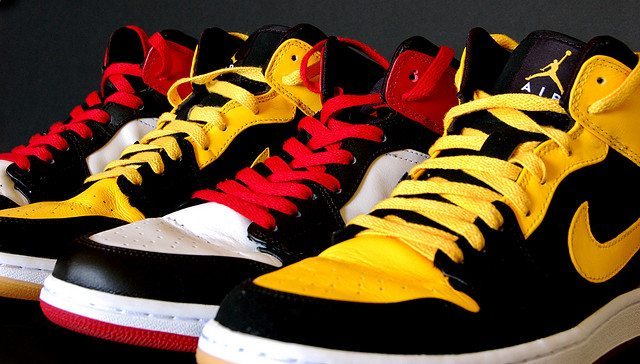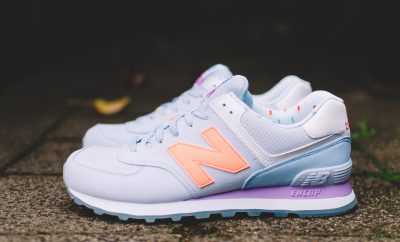
Blogs
How Air Jordans and “Sneakerheads” Shifted the Market for Nike
A little over a year ago, my parents were driving me into the city one night because I didn’t feel like taking the train to meet some friends. My then 12-year-old brother said he would come on one condition: that we stop at a shoe store at 812 Broadway. As someone who lived in the city for two years, the address alone meant nothing to me until I looked up the cross streets. The store turned out to be just south of Union Square about a block from the Strand bookstore. I wondered why I never noticed it during my frequent trips to the area.
We get to the storefront, which completely lacked any signage and had two large black-tinted glass doors. An associate stood outside like he was a bouncer guarding a hot new club. Inside, the store was crowded with suburban tween boys and their parents. Rows and rows of sneakers (many of them still wrapped in plastic) lined the two exposed-brick walls. If you want to try on a sneaker you have to go up to a counter to order them and then wait until they call your name.
My brother is a self-professed “Sneakerhead.” I suppose it’s similar to how I lust for designer shoes, but as much as I try to understand his fixation, I can’t really get past the idea of people paying hundreds (sometimes thousands) of dollars for such ugly shoes. At Flight Club, which initially started as a consignment store, there is a special display case featuring special “vintage” sneakers inspired by Back to the Future and Space Jam. On average, these obnoxious shoes go for well over $1,000. Luckily my brother chose a practical pair of white Air Jordan “Fire Red” 5’s. My parents paid $160 for those that night, now according to sneaker appraisal site Campless, those shoes can be sold at a 28 percent markup.
From that trip spawned an obsession. My brother simply had to have the latest and greatest sneaker. My mother, however, was not very open to the idea of buying (potentially used) sneakers on Ebay, despite his insistence that they were no longer available anywhere else. “How can that be when the shoe was just released today?” my mother and I would wonder. I decided to do some further investigating.
It turns out that when it comes to Nikes limited edition sneakers — Air Jordans and Lebrons — the black market is the main market. Basically, getting your hands on a pair of these sneakers is like trying to get tickets to a Taylor Swift concert; they sell out the second they become available, so you have to buy them from a third party at a 200 percent markup. Unlike designer apparel or even luxury cars, Nikes can increase in value after you buy them at retail price. Apparently there are “Sneakerheads” who buy up all of the inventory upon initial release and resell them for a living, some of which even include Footlocker employees. Last year, Nike resellers collectively made about $230 million in profits. That’s $230 million that Nike is missing out on. So wouldn’t it be a smarter business strategy to mass-produce them?
When I asked my brother why he thinks this is the case he simply shrugged and said, “It’s ’cause it’s all hype” and to a certain extent he’s right. We all know the power of celebrity collaborations. There have been riots over the coveted shoes since the late eighties. High schools even had to ban the shoes from their dress codes because students were attacking each other in an attempt to steal their shoes.
About ten years ago you could walk into the store a couple of weeks after the latest pair of Jordans were released and buy them off the shelf. It wasn’t until the onset of sites like Ebay, Craiglist, Amazon, and now social media like Instagram and Twitter, that a whole new market was born. Unfortunately, not only do third party sites cheat Nike out of profits but they can also cheat consumers. Young kids, including my brother and his friends, order these sneakers from as far as Hong Kong only to be sent cheap knockoffs instead (there’s even a whole other market for good replicas). One time my brother ordered a pair of Foamposite One Weathermans on the up-and-coming site Alibaba and was sent shoes that were so fake that no human foot could ever fit inside of them, much less walk in them.

The more offending members of his collection, which thank God he never wears. Some of these are older than he is. Courtesy of Katherine Fabian.
Another reason Air Jordans sell better at certain times than others is that sales are often governed by the trajectory of Michael Jordan’s career. For example, now that he’s retired, kids like my brother (who weren’t even born yet when he originally played for the Chicago Bulls) want to get their hands on shoes with the name of a now legendary basketball player. Now that I think about it, Jordan has “retired” so many times over the years that I think he was doing it on purpose to steer sales of his shoes. I mean, why would he bother playing all those consecutive years when he had all that shoe money to sit on?
Nike also further feeds the hype over its Air Jordans by re-releasing certain versions over the years. However, they also ultimately have the power to stop the black market from dominating the industry. If Apple limits the amount of new iPhones one can buy upon its release, why can’t Nike do the same? I have a feeling that the company enjoys all the controversy, including the riots, that come along with selling its sneakers in “limited” quantities. Interestingly enough, Ebay CEO John Donahue just joined Nike’s board last June. When it comes down to it, that $230 million hardly makes a difference in light of the $27.8 billion Nike’s made within the last year. Ultimately, only about four percent of Air Jordan’s are resold in the first place.
Frankly, I wish they wouldn’t sell some of those shoes at all because they’re so damn ugly. The eighties called, they want their sneakers back.
—
Katherine Fabian (@kafernn) is a recent graduate of Fordham University’s College at Lincoln Center and is currently applying to law schools, freelance writing, and teaching yoga. She hopes to one day practice fashion law and defend the intellectual property rights of designers.
Featured image courtesy of [Joseph Quicho via Flickr]








Comments